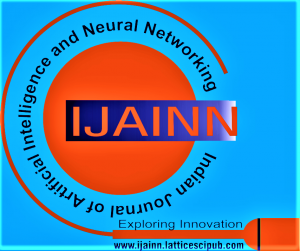![]()
Removal of Image Steganography using Generative Adversarial Network
Ritvij Vejare1, Abhishek Vaish2, Kapish Singh3, Mrunali Desai4
1Ritvij Vejare, Department of Computer Engineering, K.J. Somaiya Institute of Engineering and Information Technology, Mumbai (Maharashtra), India.
2Abhishek Vaish, Department of Computer Engineering, K.J. Somaiya Institute of Engineering and Information Technology, Mumbai (Maharashtra), India.
3Kapish Singh, Department of Computer Engineering, K.J. Somaiya Institute of Engineering and Information Technology, Mumbai (Maharashtra), India.
4Mrunali Desai, Assistant Professor, Department of Computer Engineering, K.J. Somaiya Institute of Engineering and Information Technology, Mumbai (Maharashtra), India.
Manuscript received on 10 May 2022 | Revised Manuscript received on 24 May 2022 | Manuscript Accepted on 15 June 2022 | Manuscript published on 30 June 2022 | PP: 6-10 | Volume-2 Issue-4, June 2022 | Retrieval Number: 100.1/ijainn.D1054062422 | DOI: 10.54105/ijainn.D1054.062422
Open Access | Ethics and Policies | Cite | Mendeley | Indexing and Abstracting
© The Authors. Published by Lattice Science Publication (LSP). This is an open access article under the CC-BY-NC-ND license (http://creativecommons.org/licenses/by-nc-nd/4.0/)
Abstract: Secret messages can be concealed in ordinary media like audio, video and images. This is called as Steganography. Steganography is used by cyber attackers to send malicious content that could harm victims. Digital steganography, or steganography in photographs, is exceedingly difficult to detect. The detection of steganography in images, has been investigated in thoroughly by a variety of parties. The use of steganographic techniques to send more malware to a compromised host in order to undertake different post-exploitation operations that affect the exploited system. Many steganalysis algorithms, on the other hand, are limited to working with a subset of all potential photos in the wild or have a high false positive rate. As a result, barring any suspected image becomes an arbitrary policy. Filtering questionable photos before they are received by the host machine is a more practical policy. In this paper, a Generative Adversarial Network based model is proposed that may be optimized to delete steganographic content while maintaining the original image’s perceptual quality. For removing steganography from photos while keeping the maximum visual image quality, a model is built utilizing a combination of Generative Adversarial Network (GAN) and Image Processing. In the future, utilizing a generator to synthesize a picture will become more popular, and detection of steganography in images will become very difficult. In comparison to other models that have been addressed further, the proposed model is able to give a mean square error of 5.4204 between the generated image and the cover image, as well as better outcomes based on several metrics. As a result, a GAN-based steganography eradication method will aid in this endeavor.
Keywords: Removal of Steganography, Steganalysis, Generative Adversarial Network, Neural Network, Deep Learning
Scope of the Article: Deep Learning
